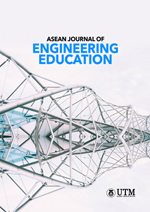Engineering Education in Industry 5.0: Competency Development and Learning Environment Strategies - A Systematic Review
DOI:
https://doi.org/10.11113/ajee2024.8n1.142Keywords:
Industry 5.0, Engineering Education, Competencies, Systematic Literature ReviewAbstract
To identify the competencies that can be developed in engineering students to address the challenges of Industry 5.0 and to demonstrate how learning environments can prepare to foster these competencies. Due to the lack of clarity in existing literature, this research aims to identify the competencies and how engineering education may be preparing to confront the evolution of Industry 5.0. A systematic literature review was conducted using the Proknow-C methodology, covering publications from 2000 to 2023 in the Scopus and Web of Science databases. After filtering, the selected articles were analyzed and compared to fulfill the study's objective. This research identified a bibliographic portfolio of relevant works on the topic of Engineering Education in Industry 5.0, extracting key competencies that can be developed in students. It also identified some characteristics of learning environments for this context. With each industrial revolution, new competencies need to be developed in engineering students. To keep pace with these transformations, engineering learning environments must be prepared to cultivate human capital. This research identified a bibliographic portfolio that enabled the identification of key competencies that can be developed in engineering students within the context of Industry 5.0, contributing to educational institutions in incorporating these references into the training of these professionals.



















